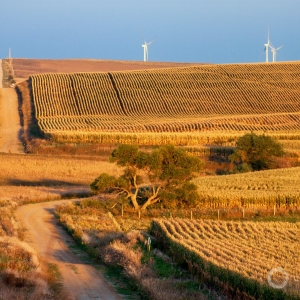Federal Water Tap, February 7: White House Publishes Infrastructure ‘Guidebook’
The Rundown
- The White House creates an outline for states, tribes, and local governments to understand new infrastructure funding.
- The Federal Maritime Commission seeks more information on how Canadian ballast water rules might affect Great Lakes ships.
- The GAO says the agency that oversees federal prisons should do more to ensure its facilities are prepared for natural hazards like floods and wildfire.
And lastly, the Centers for Disease Control and Prevention adds data on SARS-CoV-2 counts in wastewater to its Covid data dashboard.
“One of the strengths of wastewater surveillance is that it is very flexible. So once we have built this infrastructure to collect the samples, get them to a laboratory, get the data to CDC, we can add tests for new pathogens fairly quickly.” – Amy Kirby, CDC team lead for the National Wastewater Surveillance System. The CDC is now feeding data from with 37 states, four cities, and two territories into a national database for tracking the spread of the coronavirus through wastewater. Many people infected with the virus leave genetic traces of it in their feces. Public health experts say that sampling wastewater for these traces provides a broad picture of the virus’s prevalence in a community. It is not perfect, though. Areas with a large number of tourists or limited sewer infrastructure can show a faulty signal or none at all.
In context: Virus Hunters Find Coronavirus Clues in Sewage
By the Numbers
$23 Billion: Federal aid given to farmers in 2018 and 2019 to offset financial losses due to the Trump administration’s tariff tussle with China. A Government Accountability Office report analyzed the payments, finding that most went to farmers in the Midwest and South.
News Briefs
Infrastructure ‘Guidebook’
The infrastructure bill that President Biden signed into law in November is gigantic, its $1.2 trillion dollars spread across roughly 350 federal programs.
To help states, tribes, and local governments navigate the Beltway bureaucracy, the White House published a guidebook that lays out where to find the money and when applications will be accepted.
At 465 pages, the guidebook itself is no lean creature. Updated timelines and application information will be housed on a separate website where there is a search feature.
Studies and Reports
When the Levee Breaks
A watchdog agency says that the Bureau of Prisons, which is responsible for federal jails, could do more to protect prisoners during natural hazards like hurricanes and floods. The bureau could also improve its risk assessments by including the potential for severe weather to damage its facilities.
According to the Government Accountability Office, the bureau should systematically review official actions taken before, during, and after a storm or wildfire. Federal jails do share lessons learned, but not in a standardized way, the report found.
On the Radar
Great Lakes Ballast Water
The Federal Maritime Commission is seeking more information as it investigates the potential impact of Canadian environmental regulations on U.S. shipping companies operating in the Great Lakes.
Nearly two years ago, the Lake Carriers’ Association filed a complaint with the commission that Canadian rules for ballast water would harm their operations. The trade association wanted to slap a $300,000 fee on any Canadian vessel entering a U.S. port.
Ballast water helps ships balance their loads. But it can also transfer invasive species between water bodies.
The commission wants more information on how the finalized Canadian regulations might affect U.S. ships.
Comments are due by March 7 and can be sent as a Word document to secretary@fmc.gov, using the subject line “Docket No. 20-10, Comments on Conditions Created by Canadian Ballast Water Regulations in the U.S./Canada Great Lakes Trade.”
House WRDA Hearing
On February 8, a House Transportation and Infrastructure subcommittee will hear from state, local, and tribal officials about their priorities for the next edition of the Water Resources Development Act. WRDA is the legislative vehicle for Army Corps of Engineers projects such as locks, dams, flood mitigation, and, recently, drinking water.
Federal Water Tap is a weekly digest spotting trends in U.S. government water policy. To get more water news, follow Circle of Blue on Twitter and sign up for our newsletter.
Brett writes about agriculture, energy, infrastructure, and the politics and economics of water in the United States. He also writes the Federal Water Tap, Circle of Blue’s weekly digest of U.S. government water news. He is the winner of two Society of Environmental Journalists reporting awards, one of the top honors in American environmental journalism: first place for explanatory reporting for a series on septic system pollution in the United States(2016) and third place for beat reporting in a small market (2014). He received the Sierra Club’s Distinguished Service Award in 2018. Brett lives in Seattle, where he hikes the mountains and bakes pies. Contact Brett Walton






Leave a Reply
Want to join the discussion?Feel free to contribute!